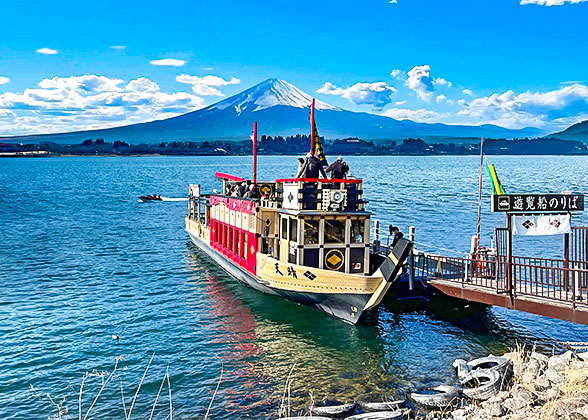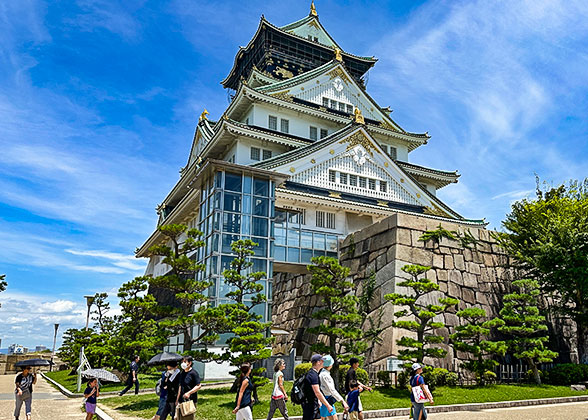Amami Islands
Being part of the Ryukyu Islands, Amami Islands are a group of subtropical islands scattered at the sea between mainland Kyushu and Okinawa. They were designated as Amamigunto National Park in 2009. Abundant natural resources including numerous unspoiled coral reefs, white sand beaches and primeval forests make the islands a nature lovers’ paradise. People flock here to admire the blue jelly-like sea, enjoy water sports and explore the mangrove forests. Besides, the remoteness of Amami Islands contributes to their unique culture, traditions, food and more.Amami Islands consist of 8 inhabited islands, of which the popular ones are Amami-Oshima Island, Tokunoshima Island, Kikaijima Island, Yoronjima Island and Okinoerabujima Island. The followings are recommended activities and spots to enjoy on each of them.
Best Things to Do on Amami-Oshima Island
Amami-Oshima Island is the biggest island of Amami Islands. Along with Tokunoshima Island, it was designated a World Natural Heritage Site in 2021 by UNESCO.1. Explore Kuroshio-no-Mori Mangrove Park
The Sumiyo Mangrove Forest on Amami-Oshima Island is the second largest mangrove forest in Japan. Here you can overlook the forest from an observation deck or explore in depth by taking a kayak along the rivers in the forest. Night tours are available as well, in which you can get close with wild animals unique to this area, notably the endangered Amami rabbit, and the kayak guide will give you a detailed introduction of local wildlife.2. Find a Heart-shaped Tide Pool on the Beach
White sand beaches are dotted along the coastline of Amami-Oshima Island. They are great for strolling, swimming or relaxing. Near the airport of the island, there is a heart-shaped tide pool on the beach. It can only be seen at low tide and is a popular photo spot.Watch a Bullfighting on Tokunoshima Island
Tokunoshima is the second largest island of Amami Islands. Besides beautiful sea view, it is also attractive for local bullfighting which is called Togyu - bull sumo. This tradition has a history of over 500 years, making the island “Home of Japan’s Bullfighting”. Every time the event is held, bulls ranging in weight from 700 to 1000 kg (1,540-2,200 lb.) fight and compete for their rankings under the watch of the enthusiastic crowds.Have a Look at the Coral Reefs of Kikaijima Island
Kikaijima is a coral reef island with an atmosphere of the Showa-era (1926-1989). No tall buildings but clear water and colorful corals can be seen around the island. It is a great snorkeling and diving destination due to the magnificent coral reefs in the surrounding sea, which are well protected and still rising every year. They are one of the fastest-rising corals in the world. You may also encounter some historic stonewalls made of corals and vines in village on the southeast coast.What to See on Yoronjima Island
Yoronjima is the southernmost island of Amami Islands - only 22 km (13.7 mi.) from Okinawa. It’s also a coral reef island with glittering white sand beaches and glassy seawater.1. Yurigahama Beach
Also known as “Phantom Beach”, Yurigahama Beach only appears at low tide from March to October every year and the location of it may change as well. From the eastern coast of the island, you can directly wade to this sandbar through the tide.2. The Ruins of Yoron Castle
Yoron Castle was built for a son of the king of Ryukyu Kingdom in the 15th century. Within the historic site of the castle, there are shrines and broken stonewalls, giving a glimpse of the exotic Ryukyu culture. From the castle you may see as far as the island of Okinawa.Admire Limestone Caves of Okinoerabujima Island
Okinoerabujima is the island of caves located between Yoronjima and Tokunoshima Islands. This island features about 300 intricate limestone caves. The most spectacular one is the 3.5-km-long (2.2 mi.) Shoryudo Cave with a 600-meter-long (656 yd.) section open to the public, which is full of amazing stalactites and stalagmites. Cave exploration will be more interesting if you take an adventure route - wading through underground rivers and climbing over stones and rocks in the cave.Local Specialties of Amami Islands
1. Keihan - Chicken Rice Dish
Keihan, literally chicken rice, is the most well-known dish in Amami Islands. The ingredients of this dish vary in different regions but chicken, omelet, ginger, green onion and dried seaweed are necessary. It is made by pouring hot chicken broth over rice and other ingredients.Keihan is a fusion of food of both Kagoshima and Okinawa. It is thought to originate from the Edo Period (1603-1868). You may have a taste of it in many local restaurants at around 800 to 1,000 JPY per serve.
2. Kokuto Shochu – Brown Sugar Alcohol
Shochu is a kind of distilled alcohol typically made by rice or barley popular in Japan. While Kokuto shochu is made from an unusual ingredient - sugarcane grown on the islands. Local people made Kokuto shochu by brown sugar, giving the alcohol a unique flavor. It is a good choice as a gift for friends or families, too.3. Oshima Tsumugi – Mud-dyed Silk
Oshima Tsumugi is a kind of textile distinctive for its dyeing method - simply by mud. It originated from Amami-Oshima Island 1,300 years ago. The mud pool used for dyeing is unique to the island with some metallic elements in it, which makes the fabric look a little lustrous. Due to its particular pattern, color and traditional weaving method, it has always been a great fabric for fine kimono. Visitors are welcome to watch or experience the process of making Oshima Tsumugi on the island. Of course you can buy some Oshima Tsumugi silk souvenirs like handkerchiefs at souvenir shops.How to Get to Amami Islands
Amami Islands are all accessible by plane or by ferry from Kagoshima mainland or Okinawa, of which Amami-Oshima Island is the easiest to access.There are daily ferry services connecting Amami Islands, Okinawa and Kagoshima. Amami-Oshima Island and Tokunoshima Island also have flights from Tokyo and other major airports in Japan. Other smaller islands have regional flights connecting each other and to Kagoshima and Naha in Okinawa.
You May Like
-
 8 Days Mini Group Tour: Tokyo - Hakone & Mt. Fuji - Kyoto - Nara - Osaka - Hiroshima - Osaka from USD2771
8 Days Mini Group Tour: Tokyo - Hakone & Mt. Fuji - Kyoto - Nara - Osaka - Hiroshima - Osaka from USD2771 -
 11 Days Mini Group Tour to Explore Japan in Depth, to Tokyo, Hakone (Mt. Fuji), Kyoto, Nara... from USD3554
11 Days Mini Group Tour to Explore Japan in Depth, to Tokyo, Hakone (Mt. Fuji), Kyoto, Nara... from USD3554 -
 7 Days Best Private Tour of Tokyo - Mt. Fuji - Tokyo - Kyoto - Nara - Osaka from USD2401
7 Days Best Private Tour of Tokyo - Mt. Fuji - Tokyo - Kyoto - Nara - Osaka from USD2401

